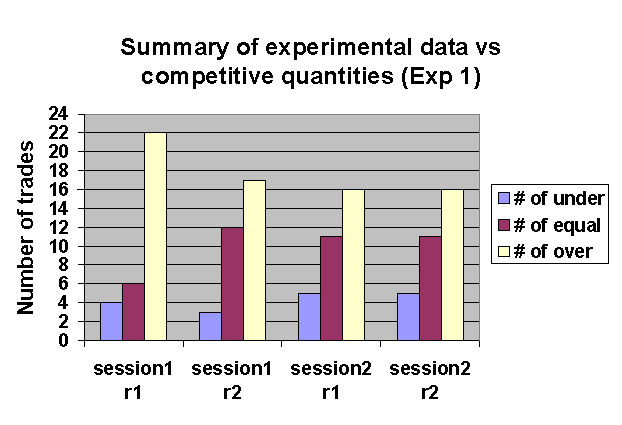Outcomes from Experiment 1
This experiment consisted of two sessions. In Session 1, the competitive
equilibrium price was $20 and in Session 2, the competitive equilibrium
price was $30. In each session, two rounds were run.
In the second round of each session, demand and supply were the same as
in the first round, but in the second round demanders and suppliers could
make use of their observation of the outcome in the first round.
Competitive Demand and Supply in Session 1
In Figure 1.1 below, we show the competitive supply and demand curve
and the competitive equilibrium price and quantity in Session 1 of
this experiment for a class of 48 students. While the demand and
supply curves vary with class size, the competitive price and the main
qualitative features of supply and the demand are the same in all classes.
Figure 1.1
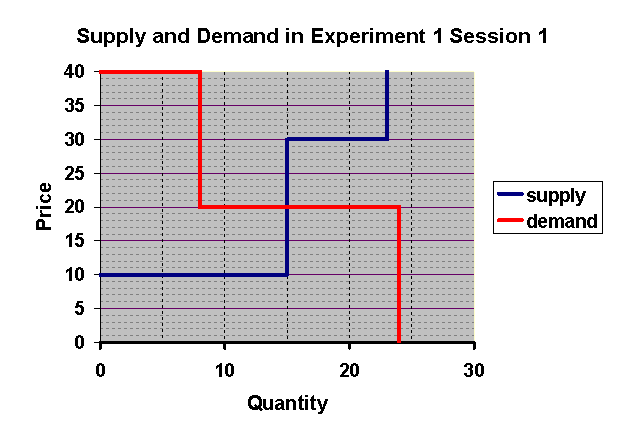
Prices in Session 1
Figures 1.2 and 1.3 show the distribution of mean prices in
the 32 sections in the first two rounds of Session 1. These prices
are clustered fairly close to the competitive equilibrium price of $20
even in the first round of trading, and move closer in the second
round. As you will see, the mean prices in this session tend
to be slightly above the competitive equilibrium price, although they get
closer to equilibrium in the second round.
The mean prices do not tell the entire story however. There is
a good deal of variation in prices within each class section. This
variation diminishes in the second period but is still substantial.
Figure 1.2
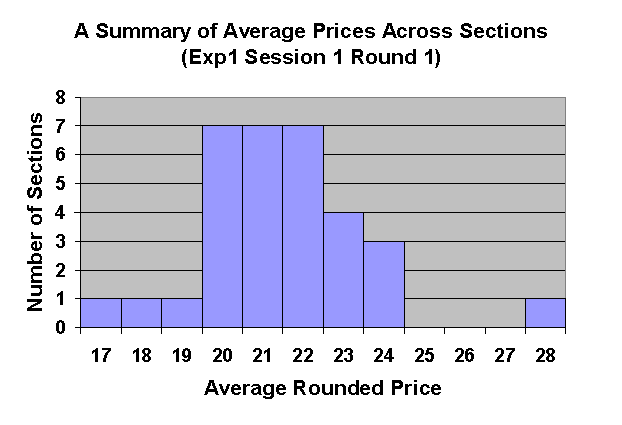
Figure 1.3
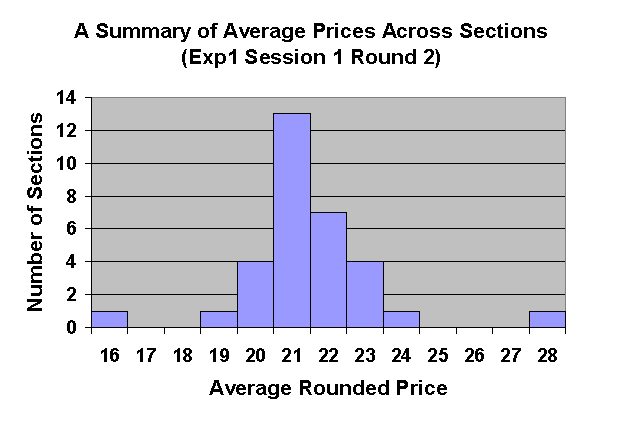
Figure 1.4 shows the distribution of prices for all transactions in
each round of Session 1. The purple line shows the distribution in
Round 1 and the yellow line shows the distribution in Round 2.
Figure 1.4
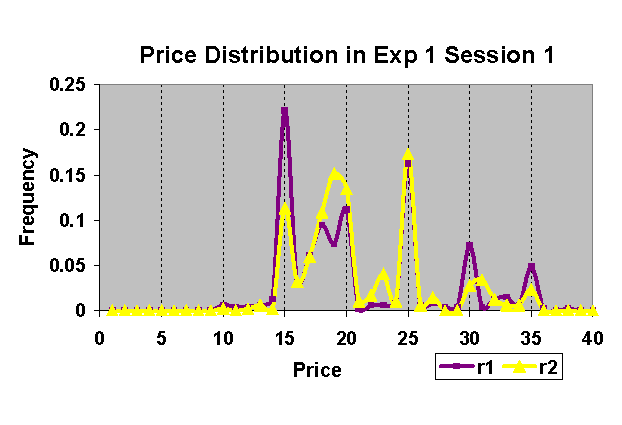
Competitive Supply and Demand In Session 2
Figure 1.5 shows the competitive supply and demand curve and the competitive
equilibrium price and quantity for a class of 48 students. While
the demand and supply curves vary with class size, the competitive price
and the main qualitative features of supply and the demand are the same
in all classes.
Figure 1.5
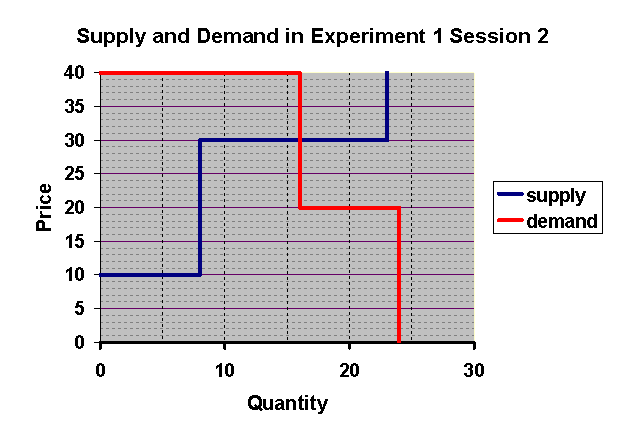
Prices in Session 2
Figures 1.6 and 1.7 show the distribution of mean prices in the 32 sections
for Session 2. The competitive equilbrium price for this session
was $30. In this session, we see that average prices are clustered
a bit below the equilibrium price in the first round and tend to be somewhat
higher in the second round.
Figure 1.6
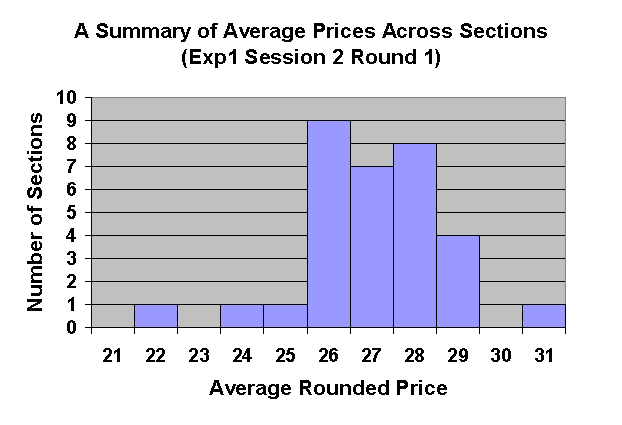
Figure 1.7
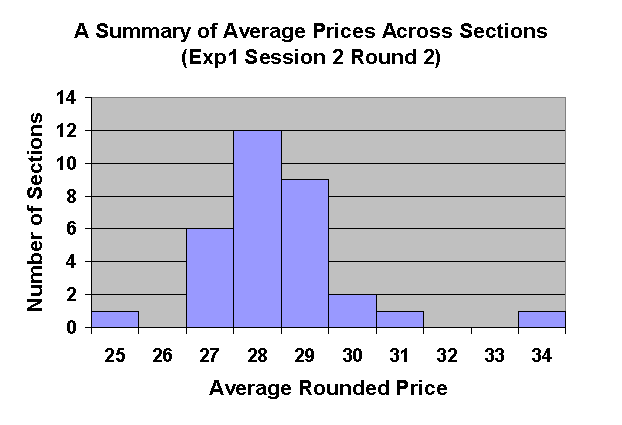
Figure 1.8 shows the distributions of prices for each of the two rounds
of Session 2.
Figure 1.8
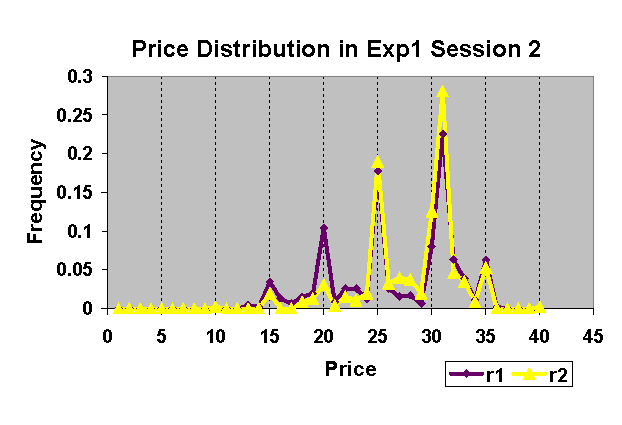
Quantities in Both Sessions
In almost every section the number of units sold was within one or two
units of the competitive equilibrium quantity. As we see from Figure 1.9,
it was much more common for the experimental quantity to be larger than
rather than smaller than the competitive equilibrium quantity.
Figure 1.9
